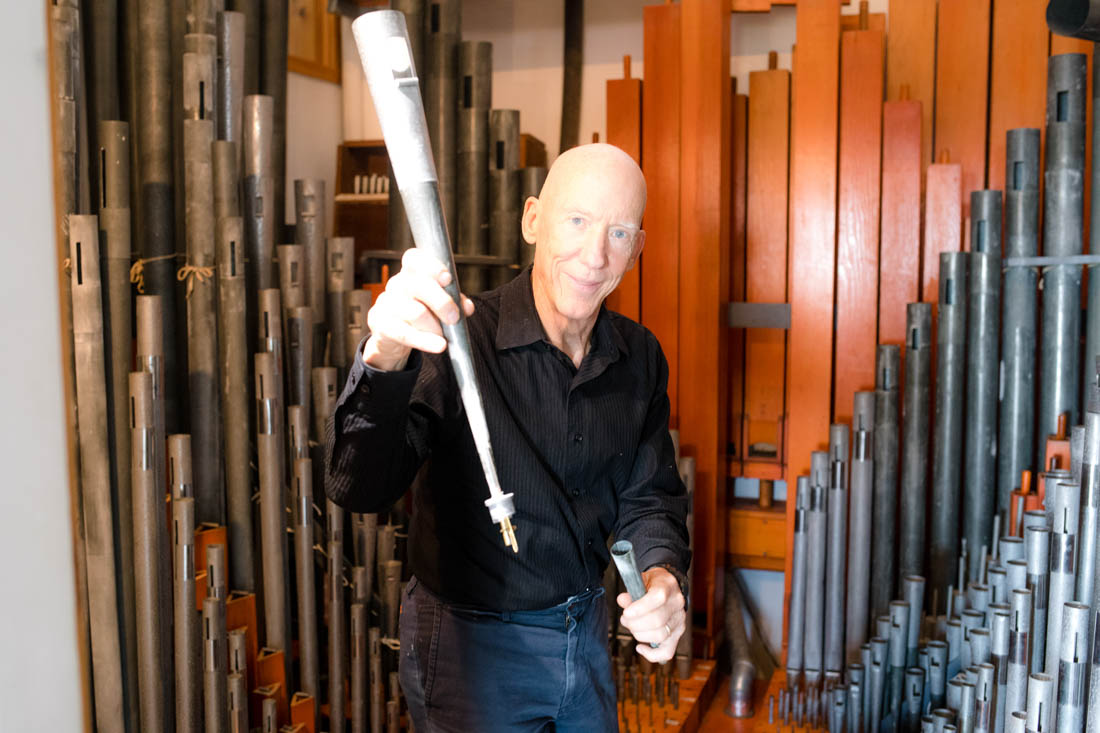Introduction
What makes an ex-IBMer teach a class on organs? One visit to Dale Ziegenfelder’s house would answer that question. Dale has a church-sized pipe organ installed in his home. (Newsflash: it’s a bit too big to fit in the living room.) LLI member Dorothy Baran, who frequently produces classes, knew of Dale’s interest in organs and, before COVID, asked him to do a class. She says, “I was delighted and surprised with the course he presented. It was well organized and full of information on the history of organs.” Class participants had a chance to see and hear Dale play the organ in his home and they toured other organs in Dutchess and Ulster County during the class. They learned that the instruments we barely notice in a church or at the Bardavon theater have fascinating musical and mechanical differences that create a unique personality for each one. But there’s a bigger story here.


An Organ in the Living Room?
How do you bring an organ into your house? It definitely doesn’t fit into the living room. When Dale was 16, he heard about a local TV repairman who had saved a theater organ from demolition. The man added a two-story addition to his home to house the organ. Fascinated, the teen-aged Dale, who had been playing a little home spinet organ since age 9, sought him out and decided he could do the same thing.
As Dale says, “This took a little bit of planning.” First, he had to build a house with enough space to house a full-sized organ. Then he had to find an available organ. This took him to a cathedral in Davenport, Iowa. Dale traveled to Davenport, took the organ apart, and rented the largest truck he could find. Twelve and a half years later, he finished reassembling the organ inside the space he had prepared in his house.
Organs of the Mid-Hudson
In addition to Dale’s own organ, the class toured six others in the area, each one illustrating a unique feature. In Woodstock, they visited a 137-year-old tracker organ, where all the action of getting sound to the organ pipes is mechanical. The organ and the pipes have to be in close proximity.
The invention of electricity transformed possibilities open to organ builders. The pipes and the console could be connected electrically, allowing for many more pipes and many more sound choices for the organist. The class visited organs that took advantage of this technology to create virtual symphonies. Another highlight was a visit to the famous Bardavon theater organ, which was designed to accompany silent movies. The organ pipes emulate bells, drums, horns, and other sounds to depict emotions and background sounds.



Each Organ is an Individual
Dale demonstrated the qualities of each organ by playing a short piece. Since every organ is unique, he practiced before the class to learn what the organ for that week’s class could do and what would best illustrate its properties. Class member Yoram Gelman says, “It was fascinating to learn about the scope of organ building among the different organs.”




You must be logged in to post a comment.